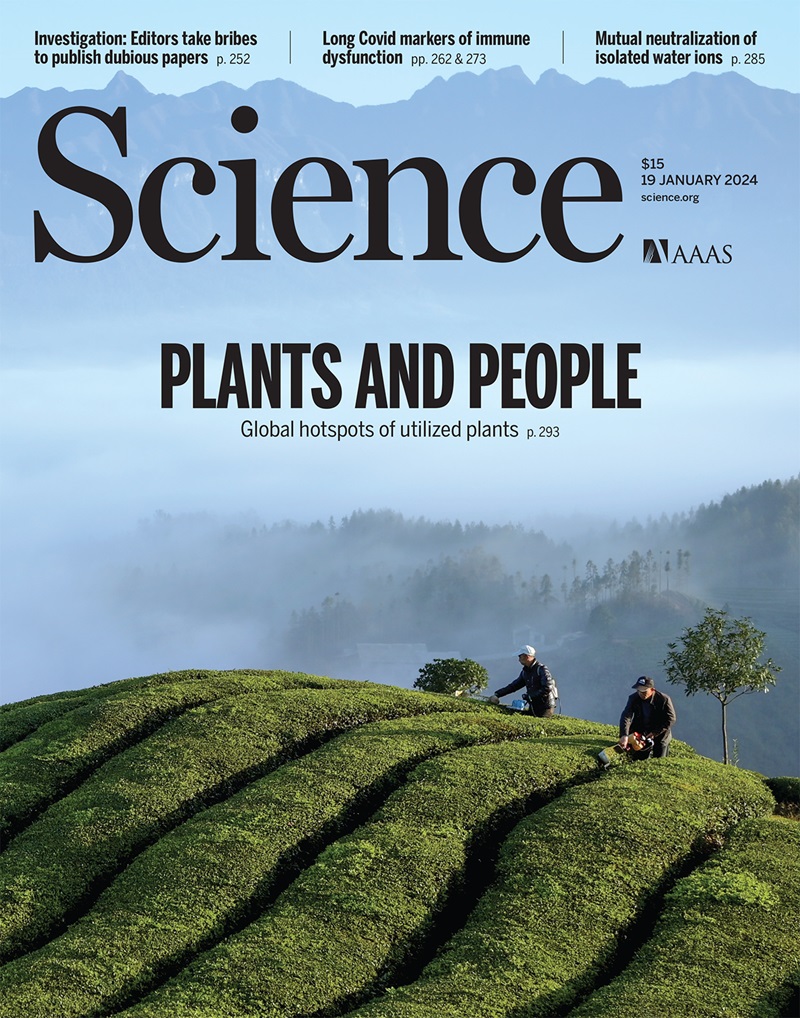A trade-off between investment in molecular defense repertoires and growth in plants
IF 44.7
1区 综合性期刊
Q1 MULTIDISCIPLINARY SCIENCES
引用次数: 0
Abstract
Given the negative fitness effects that pathogens impose on their hosts, the benefits of resistance should be universal. However, there is marked variation across plant species in the number of nucleotide-binding leucine-rich repeat receptors, which form a cornerstone of defense. The growth–defense trade-off hypothesis predicts costs associated with defense investment to generate variation in these traits. Our analysis comparing features of the intracellular immune-receptor repertoires with trait data of 187 species shows that in wild plants, the size of the molecular defense repertoire correlates negatively with growth. By contrast, we do not find evidence for a growth–defense trade-off in agricultural plants. Our cross-species approach highlights the central role of defense investment in shaping ecological trait variation and its sensitivity to domestication.
植物分子防御系统投资与生长之间的权衡
鉴于病原体对宿主造成的负面健康影响,抗性的益处应该是普遍的。然而,植物物种之间在核苷酸结合富亮氨酸重复受体的数量上存在明显差异,而这些受体是防御的基石。生长-防御权衡假说预测,与防御投资相关的成本会导致这些性状的差异。我们将细胞内免疫受体复合物的特征与 187 个物种的性状数据进行比较后发现,在野生植物中,分子防御复合物的大小与生长呈负相关。相比之下,我们在农业植物中没有发现生长-防御权衡的证据。我们的跨物种研究方法强调了防御投资在形成生态性状变异及其对驯化敏感性方面的核心作用。
本文章由计算机程序翻译,如有差异,请以英文原文为准。
求助全文
约1分钟内获得全文
求助全文
来源期刊

Science
综合性期刊-综合性期刊
CiteScore
61.10
自引率
0.90%
发文量
0
审稿时长
2.1 months
期刊介绍:
Science is a leading outlet for scientific news, commentary, and cutting-edge research. Through its print and online incarnations, Science reaches an estimated worldwide readership of more than one million. Science’s authorship is global too, and its articles consistently rank among the world's most cited research.
Science serves as a forum for discussion of important issues related to the advancement of science by publishing material on which a consensus has been reached as well as including the presentation of minority or conflicting points of view. Accordingly, all articles published in Science—including editorials, news and comment, and book reviews—are signed and reflect the individual views of the authors and not official points of view adopted by AAAS or the institutions with which the authors are affiliated.
Science seeks to publish those papers that are most influential in their fields or across fields and that will significantly advance scientific understanding. Selected papers should present novel and broadly important data, syntheses, or concepts. They should merit recognition by the wider scientific community and general public provided by publication in Science, beyond that provided by specialty journals. Science welcomes submissions from all fields of science and from any source. The editors are committed to the prompt evaluation and publication of submitted papers while upholding high standards that support reproducibility of published research. Science is published weekly; selected papers are published online ahead of print.
 求助内容:
求助内容: 应助结果提醒方式:
应助结果提醒方式:


